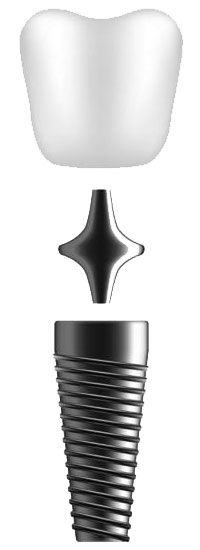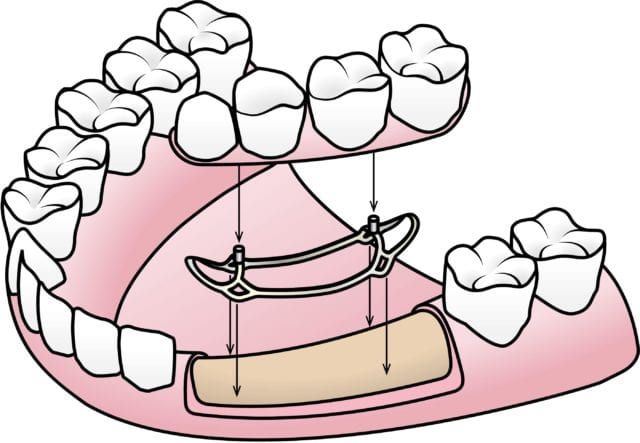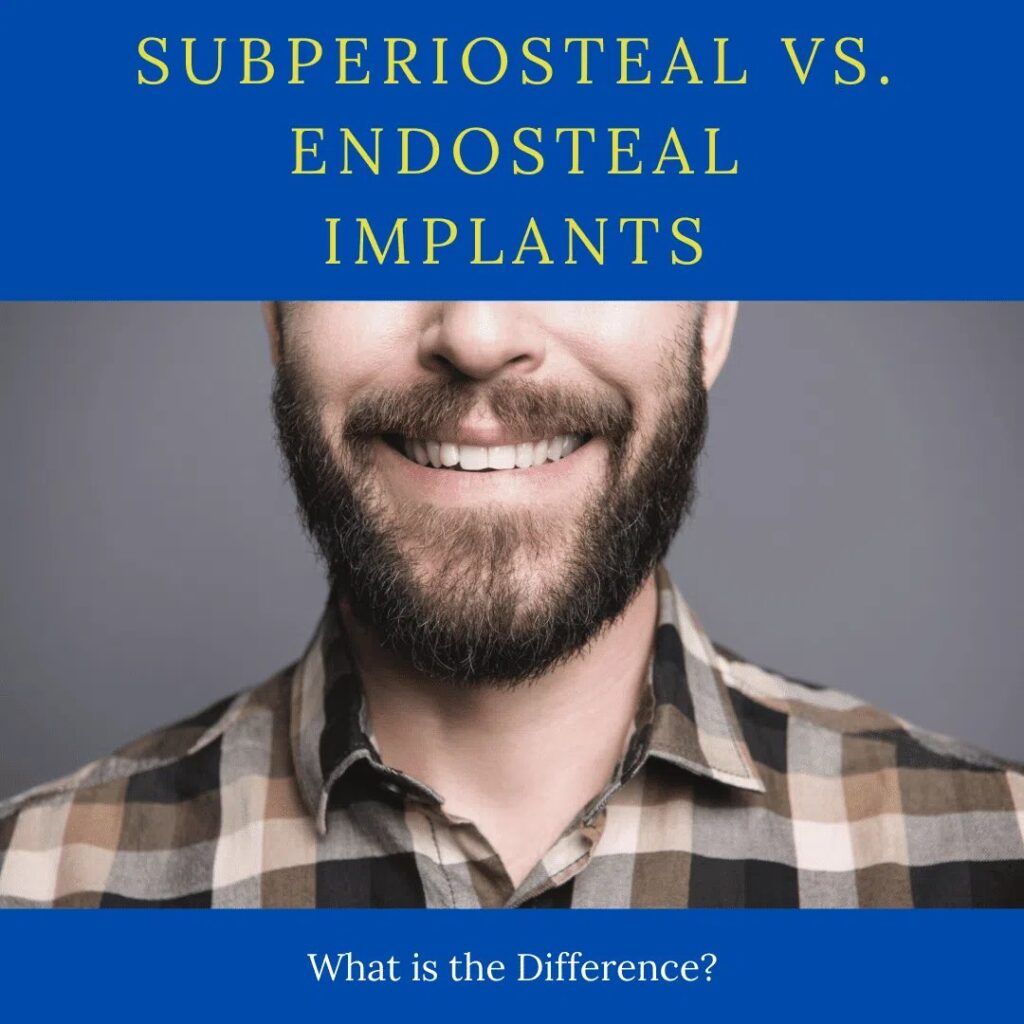Did you know that there are two types of dental implants? They are known as sub periosteal and endosteal implants. Many people are familiar with endosteal implants, since they are the most commonly used. Endosteal means “in the bone”, therefore endosteal implants are implanted into the jawbone. There are various types of endosteal implants that are further categorized by size, shape, and accessories used. Subperiosteal implants, on the other hand, are placed underneath the gums, but above the jawbone. Because of this, they are sometimes known as “on the bone” implants.
Structure

Endosteal implants are composed of three main parts: the implant, abutment, and dental prosthetic. The implant itself generally resembles a small screw most commonly made of titanium. In some cases, the implant can also be ceramic. The abutment is a small connector piece designed to fit into the implant. The dental prosthetic will then be cemented to the abutment. Depending on the number of missing teeth, endosteal implants can be used to support a dental crown, bridge, or denture.
Since subperiosteal implants are not placed into the bone, their structure varies greatly from that of endosteal implants. Instead of using an implant screw for stabilization, subperiosteal implants use a metal frame designed to fit over the jawbone and beneath the gums. This metal frame has a series of posts that are then used to support the placement of a dental prosthetic like a crown, bridge, or denture.
Procedure

Both types of implants require a minor oral surgery to be placed. However due to their different structures, each type of dental implant also has a different procedure used for placement. Endosteal implants tend to be slightly more invasive, since they are placed in the bone rather than on top of it.
To place an endosteal implant, your dentist will make an incision in the gums, drill into the jawbone, place the dental implant, attach a temporary restoration, and then stitch up the gums around the restoration. In some cases, supplementary procedures such as a bone graft or sinus lift must also be performed to ensure there is enough bone mass to support the implant as it heals.
To place a subperiosteal implant, your dentist will make a small incision in the gums. They will then drill below the gum tissue to make room for a metal frame. Once the metal frame has been placed over the bone, the gums will be sutured and left to heal. After the gums have healed, posts will be installed on the frame and used to support a dental prosthetic.
Which is Best?
When considering what type of implant to get, it is important to visit a dental implant dentist to determine what type of implant is appropriate for your dental needs. Generally speaking, subperiosteal implants are ideal for individuals who do not have enough bone mass to support an endosteal implant.
With that being said, some implant dentists will still recommend endosteal implants over subperiosteal implants even if there is a lack of bone mass. This is because endosteal implants have a much higher success rate when compared to subperiosteal implants. However, in cases where you are lacking adequate bone mass, your implant dentist will likely recommend a supplemental procedure such as a bone graft or sinus lift to build up bone mass before placing a dental implant.
In some cases, your dental implant dentist may also recommend a special type of endosteal implant known as a zygomatic implant. Zygomatic implants are extra long implants that are placed in the zygomatic bone for support. Since the zygomatic, or cheek, bones do not lose bone mass like the jawbone, they are able to provide a solid foundation for dental implants even in patients who have suffered bone loss.

